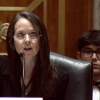Meet The Mad Scientist Who Wrote the Book on How to Hunt Hackers

In 1986, Cliff Stoll’s boss at Lawrence Berkeley National Labs tasked him with getting to the bottom of a 75-cent accounting discrepancy in the lab’s computer network, which was rented out to remote users by the minute. Stoll, 36, investigated the source of that minuscule anomaly, pulling on it like a loose thread until it led to a shocking culprit: a hacker in the system.
Stoll then spent the next year of his life following that hacker’s footprints across the lab’s network and the nascent internet. In doing so, he revealed a vast web of similar intrusions into military and government agencies carried out by a group of young German hackers, eventually revealed to have been working in the service of the Soviet KGB. The story that Stoll unraveled from that tiny initial clue, which he published in late 1989 as a kind of digital detective memoir, The Cuckoo’s Egg, turned out to be the very first known case of state-sponsored hacking—a tale far bigger than he could have ever imagined when he began hunting those three quarters missing from his lab’s ledger.
Today, that story has taken on a larger life still. As The Cuckoo’s Egg hits its 30th anniversary, the book has sold more than 1 million copies. And for a smaller core of cybersecurity practitioners within that massive readership, it’s become a kind of legend: the ur-narrative of a lone hacker hunter, a text that has inspired an entire generation of network defenders chasing their own anomalies through a vastly larger, infinitely more malicious internet.









































































